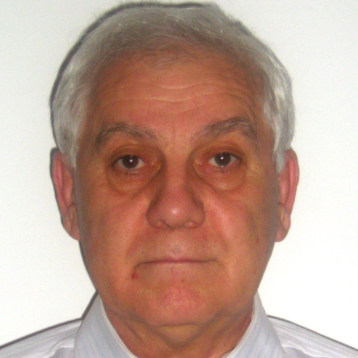International Journal of Information Technology and Computer Science (IJITCS)
IJITCS Vol. 10, No. 7, 8 Jul. 2018
Cover page and Table of Contents: PDF (size: 687KB)
Simulation of the Operation of Induction Machines at Frequencies other than 50 Hz
Full Text (PDF, 687KB), PP.13-21
Views: 0 Downloads: 0
Author(s)
Index Terms
Induction machine, Frequency control, Mechanical characteristic, Sliding
Abstract
In the paper is proposed an induction machine model that corresponds to operating conditions at the change of frequency. The applicability of simulation method for the analysis of its operation at the frequencies other than 50 Hz was examined. The operation of the induction machine which control parameter is the frequency of controlled current was particularly analyzed.
The evaluation of the proposed model was performed using the adapted subprogram in the psbdrive MATLAB Simulink package. For the verification of the results, the method of verified simulation was used, as a part of the method which was derived from the artificial intelligence algorithm. It has been confirmed that by controlling the frequencies and current of the induction machine, the ability to work in overloads can be maintained and this type of control has certain advantages in the frequency regulation of the drive with variable loads.
Cite This Paper
Jeroslav M. Živanić, Nenad A. Marković, Slobodan N. Bjelić, "Simulation of the Operation of Induction Machines at Frequencies other than 50 Hz", International Journal of Information Technology and Computer Science(IJITCS), Vol.10, No.7, pp.13-21, 2018. DOI:10.5815/ijitcs.2018.07.02
Reference
[1]L.W. Match, J.D. Morgan, “Electromagnetic and Electromechanical Machines”, 3rd Edition, Harper&Row Publishers, New York, 1986.
[2]N. Mohan, T.M. Undeland, W.P. Robbins, “Power Electronics: Converters, Applications, and Design”, John Wiley & Sons. Inc., Section 8.4.1., NewYork, 1995.
[3]J. Arrillaga, C.P. Arnold, B.J. Harker, “Computer Modeling of Electrical Power Systems”, New York: John Wiley & Sons, Inc., 1986.
[4]Standards: IEC 60034-1, IEC 60947-4.
[5]L. Van der Sluis, W.R. Rutgers, C.G.A. Koreman, “A physical arc model for the simulation of current zero behaviour of high-voltage circuit breakers”, IEEE Transactions on Power Delivery, Vol. 7, Issue 2, Apr. 1992, pp. 1016–1022, DOI: 10.1109/61.127112.
[6]L. Van der Sluis, “Transients in Power Systems”, John Wiley & Sons Ltd, 2001.
[7]G. Fehmel, M. Flachmann, Elektriche Machinen, 9 Auflage Vohel Bucheverlah, ISBN 3-8023-0495-0, 1992.
[8]N. Marković, S. Bjelić, J. Živanić, U. Jakšić, “Simulation of the Impact of Higher Harmonics on the Transient Process of Induction Machine Fed From PWM Inverters”, Technical Gazette, Vol. 24, No. 1, Preliminary communication, February 2017, pp. 265–271, DOI Number: 10.17559/TV-20150502231618.
[9]A.A. Mahfouz, M.K. Mohammed, F.A. Salem, “Modeling, Simulation and Dynamics Analysis Issues of Electric Motor, for Mechatronics Applications, Using Different Approaches and Verification by MATLAB/Simulink”, International Journal of Intelligent Systems and Applications, IJISA 2013, Vol. 5, No. 5, April 2013, pp. 39–57, DOI: 10.5815/ijisa.
[10]N. Marković, S. Bjelić, J. Živanić, V. Milićević, Z. Milićević, “Model of Transient Process Where Three-Phase Transducer Feeds Induction Motor Equivalented as a Variable Active-Inductive Load”, Mathematical Problems in Engineering, Vol. 2016, Article ID 6740261, Research Article, 2016, http://dx.doi.org/10.1155/2016/6740261.
[11]B. Rashidi, “FPGA Implementation of Digital Controller for Simple and Maximum Boost Control of Three Phase Z-Source Inverter”, International Journal of Information Technology and Computer Science, IJITCS2013, Vol. 5, No. 4, pp. 85–95, DOI: 10.5815/ijitcs.
[12]E.G. Andreeva, D.V. Šamec, “МКЕ анализ стационарных магнитных полей с помощью программного пакета АНСYС”: Učeb. Posobie. Omsk”, Izdvo OmGTU, 2002, pp. 92.
[13]E.F. Fuchs, M. Poloujadof, G.W. Neal, “Starting performance of saturable three-phase induction motors”, IEEE Transactions on Energy Conversion, Vol. EC-3, No. 3, September 1988, pp. 624–635.
[14]B. Jovanović, S. Bjelić, N. Marković, “Transient Processes on the Elements of Underground Installations”, International Journal of Information Technology and Computer Science, IJITCS2017, Vol. 9, No. 9, pp. 1–10, DOI: 10.5815/ijitcs.
[15]N. Marković, S. Bjelić, U. Jakšić, J. Živanić, “Scheme of device for voltage asymmetry correction”, Innovation and development, Bor, Serbia, No. 2, 2011, pp. 77–86.
[16]S. Bjelić, N. Marković, U. Jakšić, “The simplified procedure for calculation of Influence of thermal losses on decrease of technical endurance of electric equipment”, 3rd Regional Conference, Industrial Energy and Environmental Protection in the countries of South East Europe, Serbia, IEEP ’11, Kopaonik, MK Mountain Resort, June 21-25, 2011, pp. 28.
[17]L.L. Grigsby, “The Electric Power Engineering Hand book”, Chapter 10 Power System Transients, 10.6 Transient Voltage Response of Coils and Windings, CRC Press LLC, 2001.
[18]MATLAB SIMULINK Sim Power System, Copyright 1984-2002 The Math Works, Version 6.5.0,180913a, June 2, 2000.
[19]S. Bjelić, Z. Bogićević, “Computer Simulation of Theoretical Model of Electromagnetic Transient Processes in Power Transformers”, International Journal of Information Technology and Computer Science, IJITCS2013, Vol. 6, No. 1, pp. 1–12, DOI: 10.5815/ijitcs.
[20]N. Marković, S. Bjelić, J. Živanić, U. Jakšić, “Numerical simulation and analytical model of electrical arc impedance in the transient processes”, Elektronika, Energetika, Elektrotechnika, Przegląd Elektrotechniczny, 2013-2a2013, pp. 113–117.
[21]www.sever.co.rs, Low Voltage three-phase Motors Prospects.


